Forums
- Forums
- Duggy's Reference Hangar
- USAAF / USN Library
- North American AJ Savage/XA2J Super Savage
North American AJ Savage/XA2J Super Savage
Post a reply
- Go to Previous topic
- Go to Next topic
- Go to Welcome
- Go to Introduce Yourself
- Go to General Discussion
- Go to Screenshots, Images and Videos
- Go to Off topic
- Go to Works in Progress
- Go to Skinning Tips / Tutorials
- Go to Skin Requests
- Go to IJAAF Library
- Go to Luftwaffe Library
- Go to RAF Library
- Go to USAAF / USN Library
- Go to Misc Library
- Go to The Ops Room
- Go to Made in Germany
- Go to Campaigns and Missions
- Go to Works in Progress
- Go to Juri's Air-Raid Shelter
- Go to Campaigns and Missions
- Go to Works in Progress
- Go to Skinpacks
- Go to External Projects Discussion
- Go to Books & Resources
-
3 years agoSun May 22 2022, 01:26pmDuggy
 Main AdminThe North American AJ Savage (later A-2 Savage) was a carrier-based medium bomber built for the United States Navy by North American Aviation. The aircraft was designed shortly after World War II to carry atomic bombs and this meant that the bomber was the heaviest aircraft thus far designed to operate from an aircraft carrier. It was powered by two piston engines and a turbojet buried in the rear fuselage. The AJ-1 first became operational in 1950 and several were based in South Korea during 1953 as a deterrent against North Korea. Of the 140 built, plus three prototypes, 30 were reconnaissance aircraft. Inflight-refueling equipment was deployed on the Savage in the mid-1950s. The bomber was replaced by the Douglas A3D Skywarrior beginning in 1957.
Main AdminThe North American AJ Savage (later A-2 Savage) was a carrier-based medium bomber built for the United States Navy by North American Aviation. The aircraft was designed shortly after World War II to carry atomic bombs and this meant that the bomber was the heaviest aircraft thus far designed to operate from an aircraft carrier. It was powered by two piston engines and a turbojet buried in the rear fuselage. The AJ-1 first became operational in 1950 and several were based in South Korea during 1953 as a deterrent against North Korea. Of the 140 built, plus three prototypes, 30 were reconnaissance aircraft. Inflight-refueling equipment was deployed on the Savage in the mid-1950s. The bomber was replaced by the Douglas A3D Skywarrior beginning in 1957.
Design and development
At the end of World War II, the U.S. Navy began a design competition on 13 August 1945 for a carrier-based bomber which could carry a 10,000-pound (4,536 kg) bomb that was won by North American Aviation. Later that year, the Navy decided that it needed to be able to deliver atomic bombs and that the AJ Savage design would be adapted to accommodate the latest Mark 4 nuclear bomb, the next step in development from the more sophisticated imploding plutonium sphere design Fat Man Mk3 used on Nagasaki. A contract for three XAJ-1 prototypes and a static test airframe was awarded on 24 June 1946. The first prototype made its maiden flight two years later on 3 July 1948.That same year the US Navy began an interim capability program employing the Lockheed P-2 Neptune carrying a crash program reproduction of the smaller simpler all uranium 'gun' design Little Boy nuclear bomb as its first carrier launched nuclear bomber aircraft until the Savage was in service. The Neptune launched using JATO assist but could not land on existing carriers; if launched they had to either ditch at sea after its mission or land at a friendly airbase.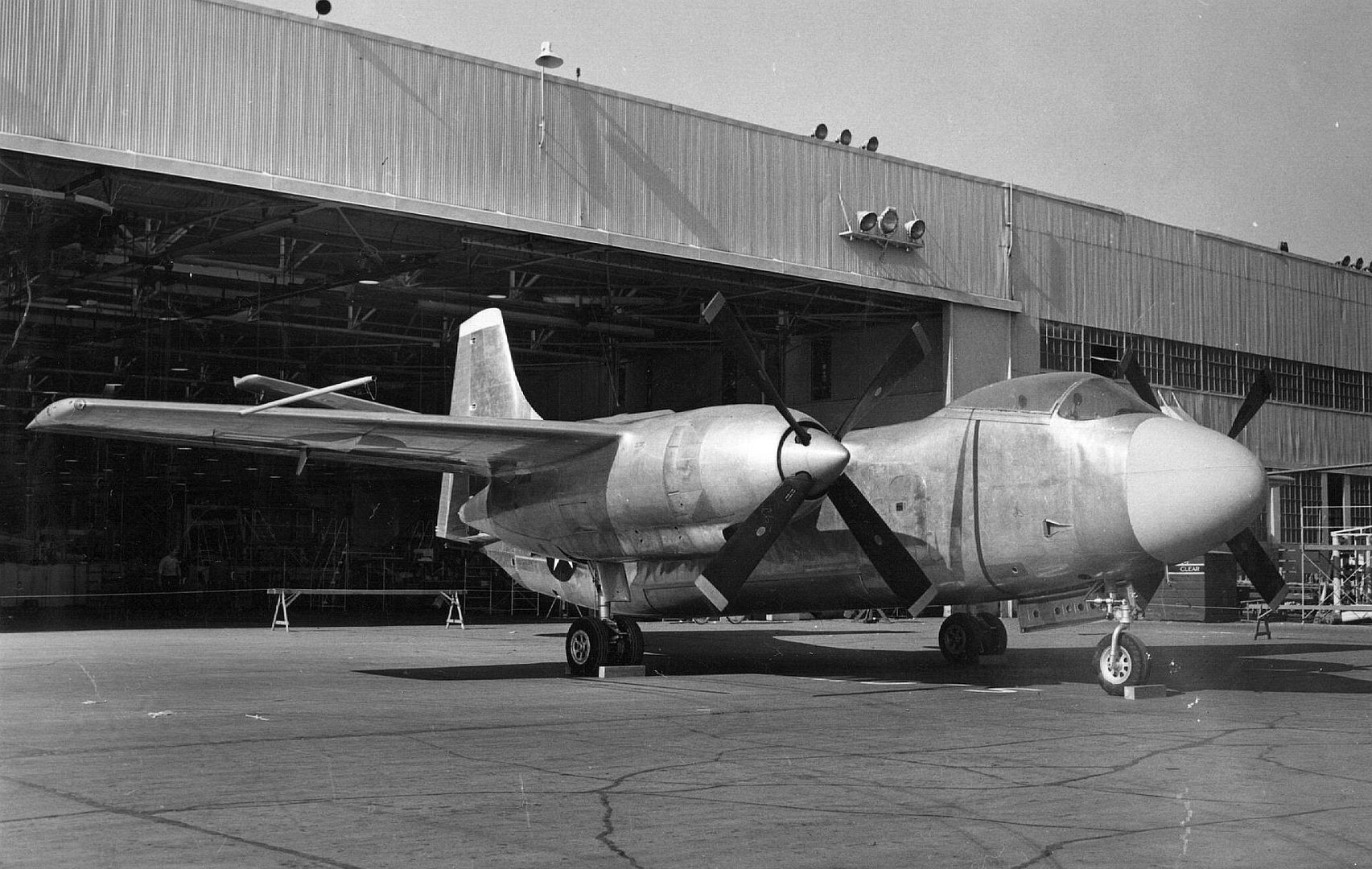


The AJ-1 was a three-seat, high-wing monoplane with tricycle landing gear. To facilitate carrier operations, the outer wing panels and the tailfin could be manually folded. It was fitted with two 2,300-brake-horsepower (1,700 kW) Pratt & Whitney R-2800-44W Double Wasp piston engines, mounted in nacelles under each wing with a large turbocharger fitted inside each engine nacelle, and a 4,600-pound-force (20,000 N) Allison J33-A-10 turbojet was fitted in the rear fuselage. The jet engine was only intended for takeoff and maximum speed near the target, and was fed by an air inlet on top of the fuselage that was normally kept closed to reduce drag. To simplify the fuel system, the jet engine used piston engine avgas rather than jet fuel. One 201-US-gallon (760 l; 167 imp gal) self-sealing fuel tank was housed in the fuselage, and another 508-US-gallon (1,920 l; 423 imp gal) tank was located in each wing. The aircraft usually carried 300-US-gallon (1,100 l; 250 imp gal) tip tanks and it could house three fuel tanks in the bomb bay with a total capacity of 1,640 US gallons (6,200 l; 1,370 imp gal). Other than its 12,000-pound (5,400 kg) bombload, the bomber was unarmed.
Two of the three prototypes crashed during testing, but their loss did not materially affect the development of the aircraft as the first batch of Savages had been ordered on 6 October 1947. The most significant difference between the XAJ-1 and the production aircraft was the revision of the cockpit to accommodate a third crewman in a separate compartment. The first flight by a production aircraft occurred in May 1949 and Fleet Composite Squadron 5 (VC-5) became the first squadron to receive a Savage in September.The squadron participated in testing and evaluating the aircraft together with the Naval Air Test Center (NATC) in order to expedite the Savage's introduction into the fleet. The first carrier takeoff and landing made by the bomber took place from the USS Coral Sea on 21 April and 31 August 1950, respectively. Many, if not most, surviving AJ-1s had their tails upgraded to the improved AJ-2 configuration.
A photo-reconnaissance version of the Savage, initially known as the AJ-1P, but later designated as the AJ-2P, was ordered on 18 August 1950. It had improved R-2800-48 piston engines and the tail was redesigned to add 1 foot (30 cm) of height to the tailfin. The 12° dihedral of the tail stabilizers was eliminated and the rudder enlarged which slightly lengthened the aircraft. Early AJ-2Ps retained the three-man crew, but late-model aircraft added a fourth aft-facing crewman to the upper cockpit. The Savage's internal fuel capacity was also increased. The nose of the aircraft was remodeled with a prominent "chin" to accommodate a forward-looking oblique camera and a variety of oblique and vertical cameras could be fitted in the bomb bay. Photoflash bombs could be carried for night photography missions.
The AJ-2 incorporated all of the changes made to the late model AJ-2P and 55 aircraft were ordered on 14 February 1951. The AJ-2 deleted the separate compartment for the third crewman, but retained the third seat in the cockpit from the AJ-2P.
Around 1954, NATC modified the sole surviving XAJ-1 to conduct inflight refueling tests using the probe and drogue configuration. The turbojet engine was removed and the fuel hose and its drogue extended out from the jet's former exhaust opening. Aircraft in service retained the turbojet and had their bomb bay doors modified to accommodate the hose and drogue. They were refueling aircraft during late 1954.
Operational history
When first deployed, the AJ-1 was too large and heavy to be used by any American aircraft carrier except for the Midway class. The modernized Essex class carriers with reinforced decks and the very large Forrestal class could also handle the Savage. The aircraft was not popular aboard ship as "it was so big and cumbersome that it complicated any other flight operations the ship was required to conduct." One problem was that the wings had to be folded one at a time by a crewman on top of the fuselage with a portable hydraulic pump, a time-consuming process, so that the bomber could be moved out of the way to allow other aircraft to land or take off. One pilot reported that the AJ-1 was "a dream to fly and handled like a fighter", when everything was working properly. The aircraft, however, was not very reliable, possibly because it was rushed into production before all the problems could be ironed out.
Early in the Savage's career, squadrons would typically deploy a detachment to Naval Air Station Port Lyautey, Morocco, for service with the Sixth Fleet and fly the bombers aboard aircraft carriers that were already deployed to the Mediterranean as needed. The plan was that the Savages would then be loaded with atomic bombs already aboard the carriers and launched once the carriers were in the Eastern Mediterranean Sea. The tactic to deliver the bombs was to fly at low level through Bulgaria and Romania before climbing at maximum power to the proper altitude to release the bomb. The aircraft would then perform a wingover maneuver and dive to low altitude, keeping the tail of the aircraft aimed at the target to avoid serious damage from the shock wave of the explosion.
Fleet Composite Squadron 5 (VC-5) made the first of its three deployments from Naval Air Station Norfolk, Virginia to NAS Port Lyautey in February 1951. Due to homeport changes, VC-5's next two deployments would originate from Naval Air Station Jacksonville, Florida followed by Naval Auxiliary Air Station Sanford, Florida.
Fleet Composite Squadron 6 (VC-6) at NAS Moffett Field, California received its first Savages in late 1950 and deployed to NAS Port Lyautey in October 1951 before transferring to the Pacific Fleet in October 1952. In July 1953 it deployed a detachment of two aircraft to K-3 Air Base in Korea to act as a nuclear deterrent. VC-7, VC-8, and VC-9 received their AJ-1s beginning in June 1951 and all remained on the East Coast of the United States. The Navy redesignated all of its Savage-equipped composite squadrons as heavy attack squadrons (VAH) on 1 November 1955. The squadrons retained their existing numbers except for VC-8 which became VAH-11 as all East Coast squadrons were odd-numbered.
AJ tankers were used to refuel then-Marine Corps Major John Glenn's Vought F8U-1P Crusader during the Project Bullet transcontinental speed record flight in July 1957; AJ-2s from VAH-6 on the West Coast and AJ-1s from VAH-11 on the East Coast. Beginning in 1957 the Douglas A3D Skywarrior began to replace the Savages in the VAH Squadrons. Their refueling role was continued by the formation in January 1958 of VAH-15 on East Coast and VAH-16 on the West Coast. Both squadrons were equipped with AJ-2s, but both were short-lived and disbanded early the following year.
The AJ-2P was flown by Photographic Squadron 61 (VJ-61) and Photographic Squadron 62 (VJ-62), both of which were redesignated as Heavy Photographic Squadrons, VAP-61 and VAP-62, respectively, on 2 July 1956. VJ-61 was assigned to the Pacific Fleet and VJ-62 to the Atlantic Fleet. The squadrons never deployed as complete units, but rather deployed as one to three aircraft detachments. Detachment Queen was formed by VJ-61 during the Korean War at Naval Station Sangley Point, in the Philippines, to fly reconnaissance missions over the People's Republic of China and North Korea. The detachment continued its missions after the war until at least June 1954. Both squadrons frequently provided photographic mapping for agencies outside the Navy like the Army Map Service, Army Corps of Engineers, U.S. Coast and Geodetic Survey, and U.S. Departments of the Interior and Agriculture. The AJ-2s in these squadrons were replaced by Douglas A3D-2P Skywarriors beginning in 1959, although the last month that they were reported in squadron service was January 1960. Surviving AJ-1 and AJ-2 aircraft became A-2As and A-2Bs, respectively, when the Department of Defense redesignated all U.S. military aircraft in a common series in 1962.
Three AJ-2s were loaned to the National Aeronautics and Space Administration as weightlessness simulators from January 1960 to September 1964. They were eventually destroyed during firefighting training. Three AJ-1s were purchased by AJ Air Tankers, Inc. in early 1960 for use as water bombers. Their turbojets were removed before the delivery flight to California, during which one aircraft crashed. The two surviving aircraft were fully modified for the role after delivery and could carry 2,000 US gallons (7,600 l; 1,700 imp gal) of fire retardant. They first flew missions during the 1961 fire season. Another aircraft crashed on takeoff in September 1967 when an engine failed and the sole survivor only made a few more flights before it was scrapped in 1968–69.
The Avco Lycoming Savage with the YF102 extended
At least one other AJ-2 was purchased and used as a water bomber before it was purchased in 1970 by Avco Lycoming for use as an engine testbed for the YF102 turbofan. The J33 turbojet had to be reinstalled and the aircraft required almost a year of maintenance before it could be flown to Avco Lycoming's home airfield at Stratford, Connecticut. The YF102, too fat to fully fit in the bomb bay, was mounted on a retractable mechanism that could be lowered below the aircraft for tests. The testing was conducted from January to July 1972. Another round of testing on the commercial derivative of the F102, the ALF 502, was performed between January 1979 and December 1980. In 1984, routine maintenance discovered several loose rivets on the spar and further examination showed that the skin was starting to separate from the spar. This damage was too uneconomical to repair so Avco Lycoming decided to donate the last surviving Savage to the National Museum of Naval Aviation. The AJ-2 was flown to Naval Air Station Pensacola in Pensacola, Florida on 9 May 1984.
Text from wikki.
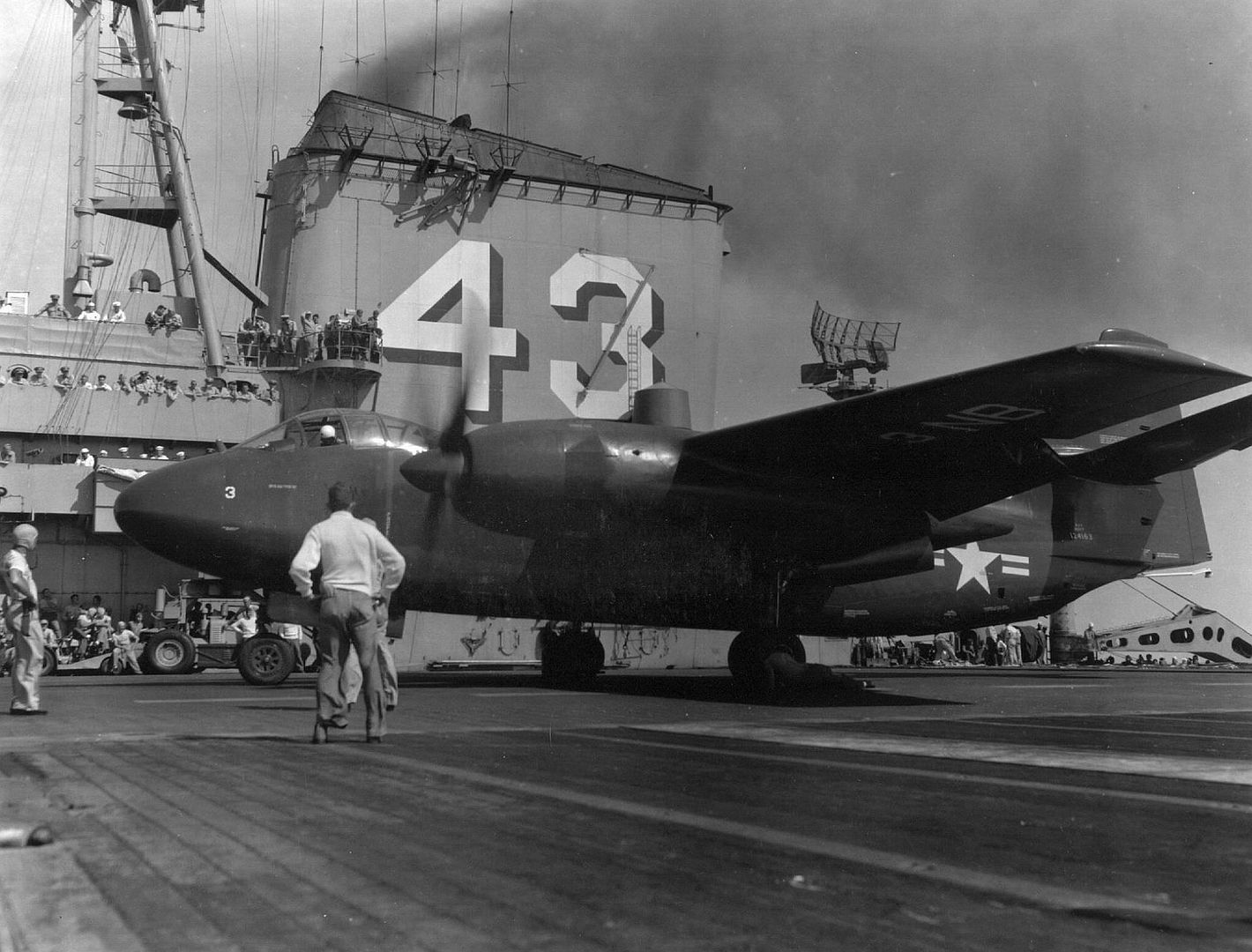
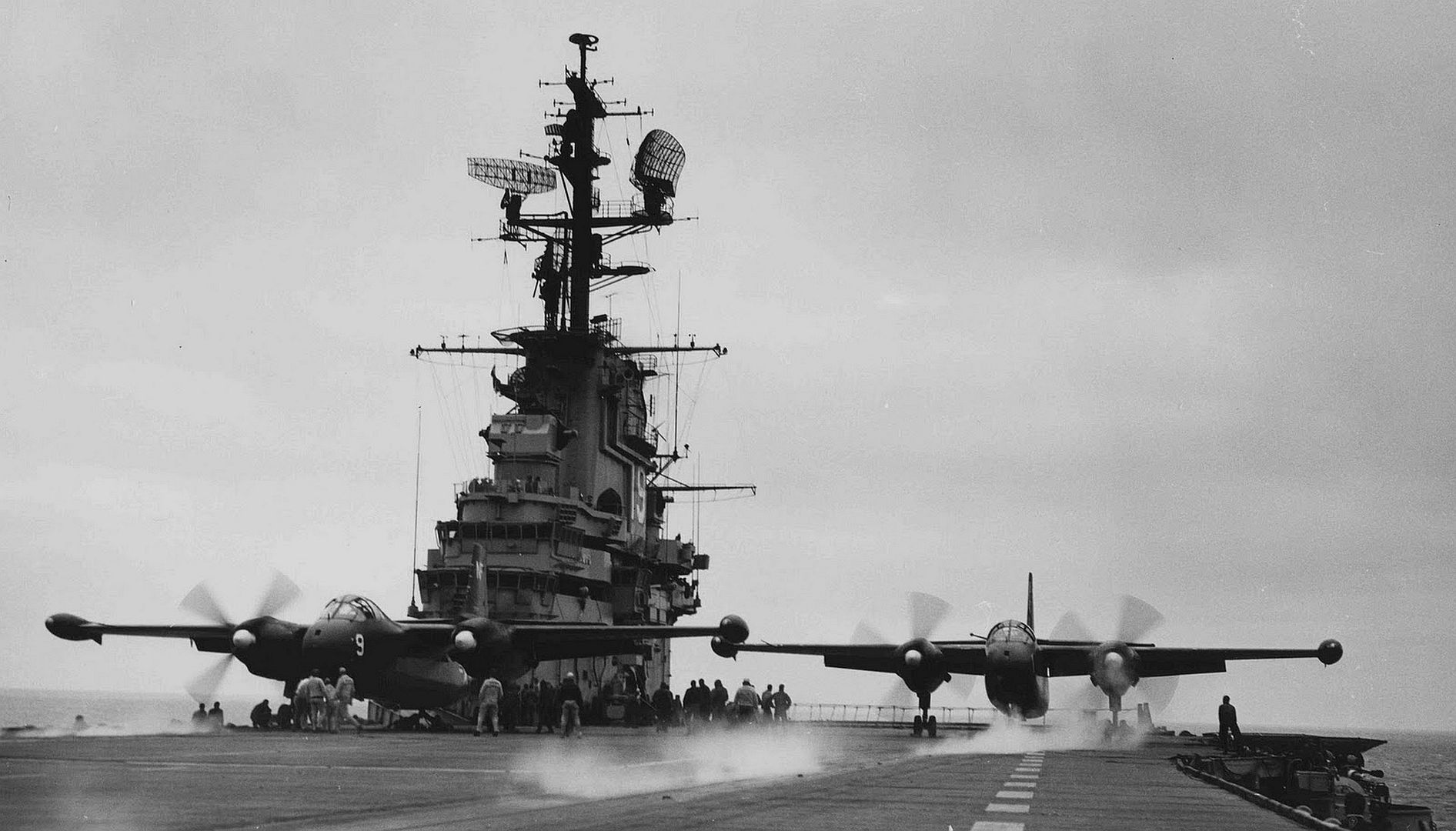







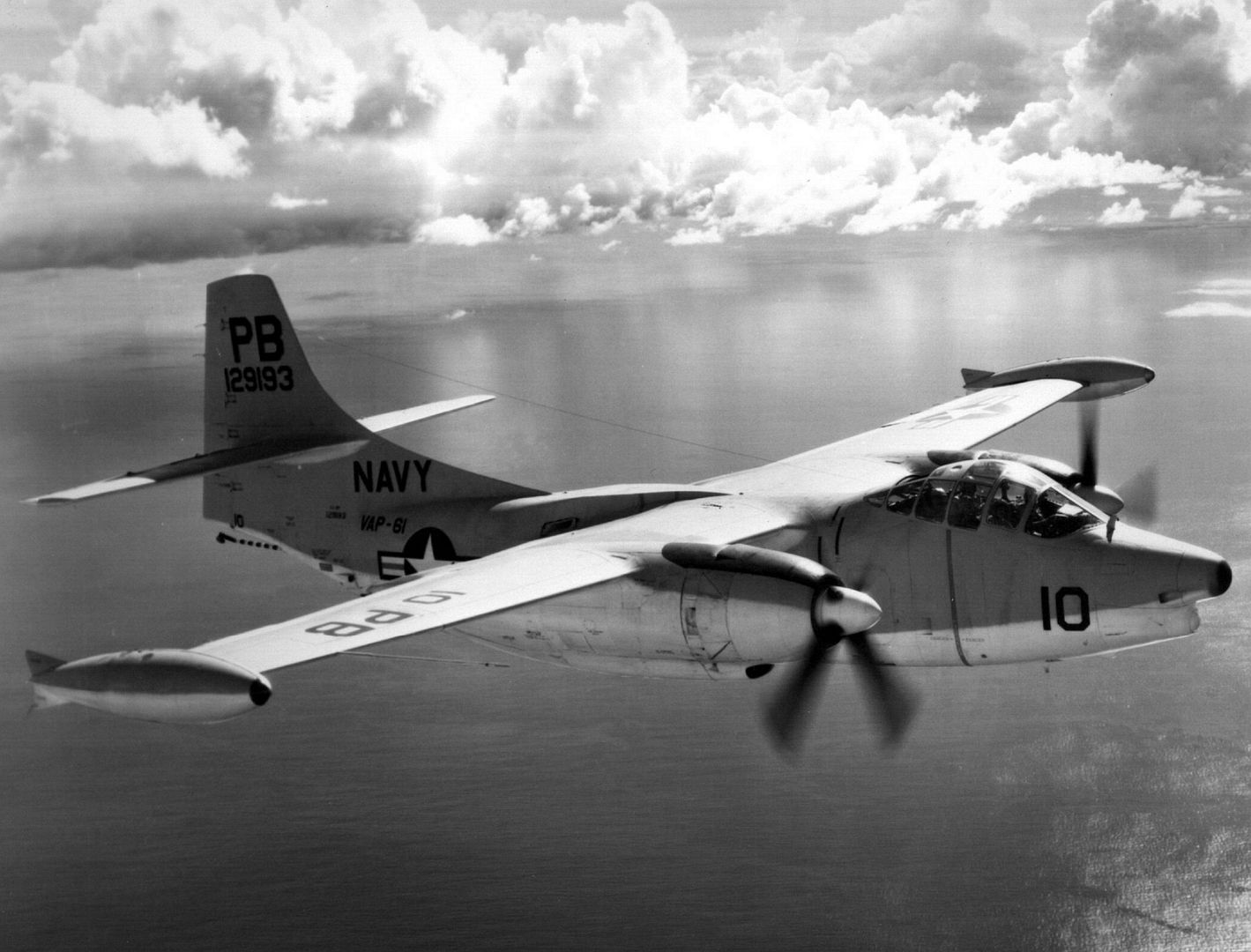






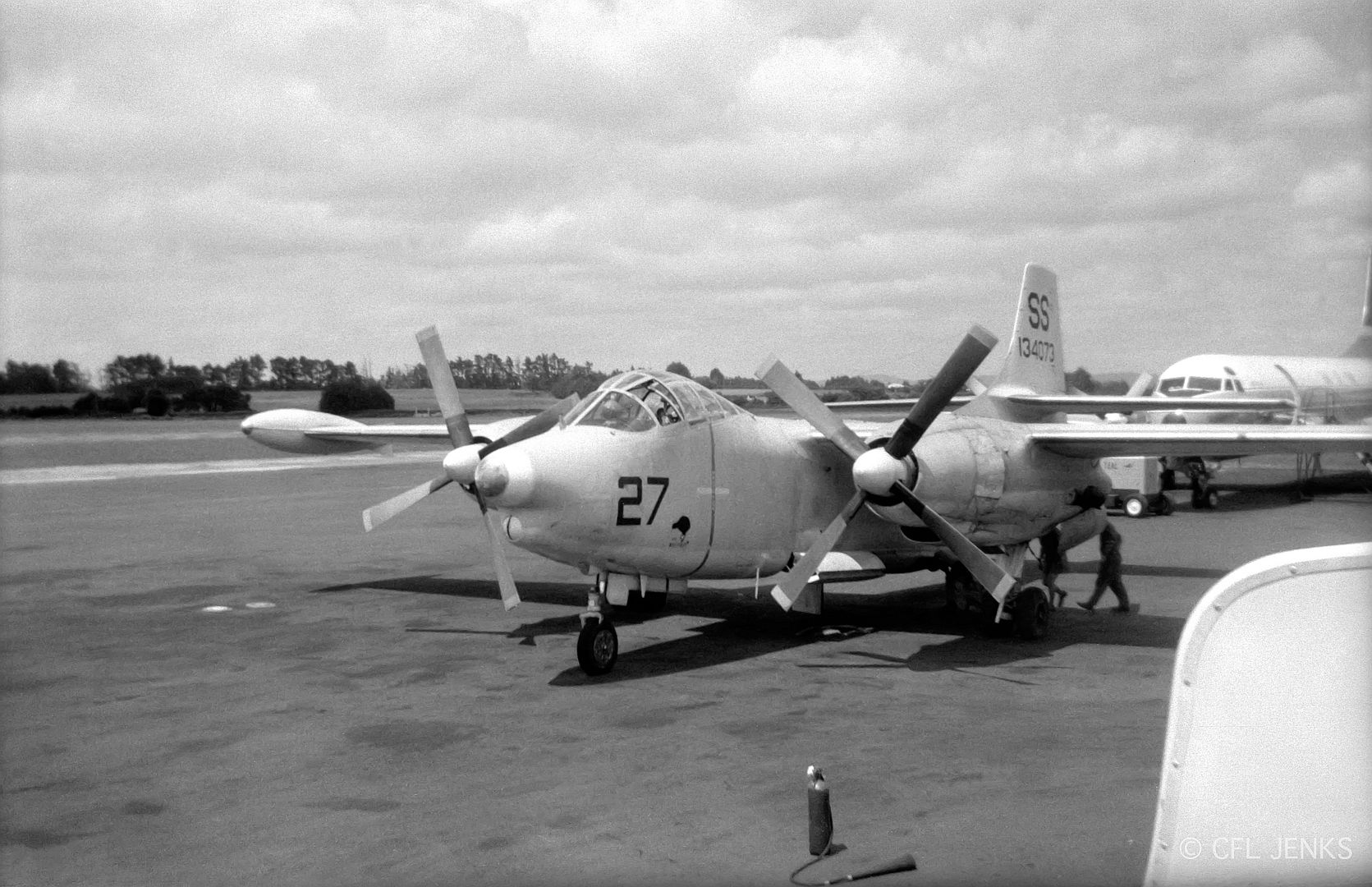



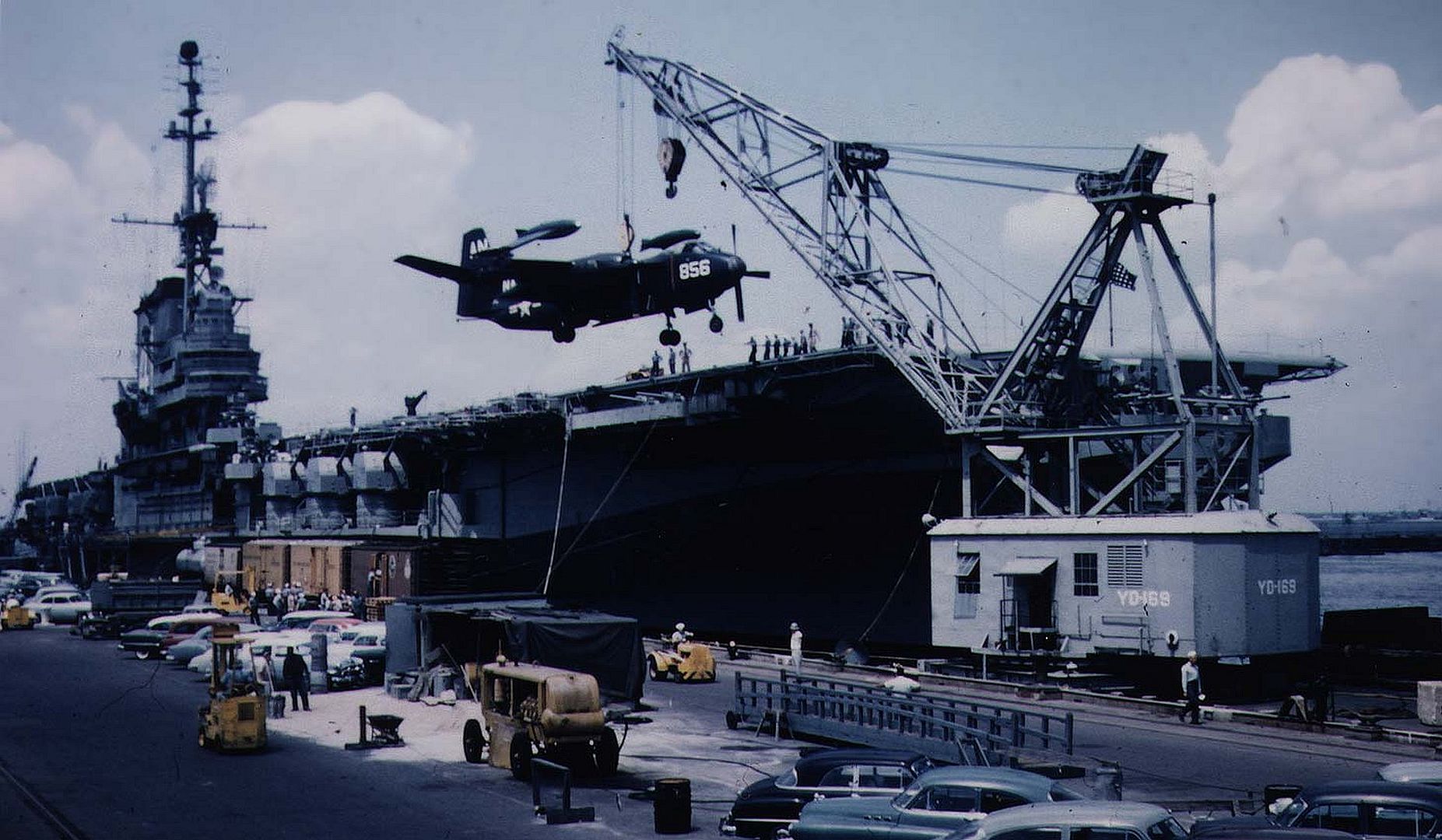


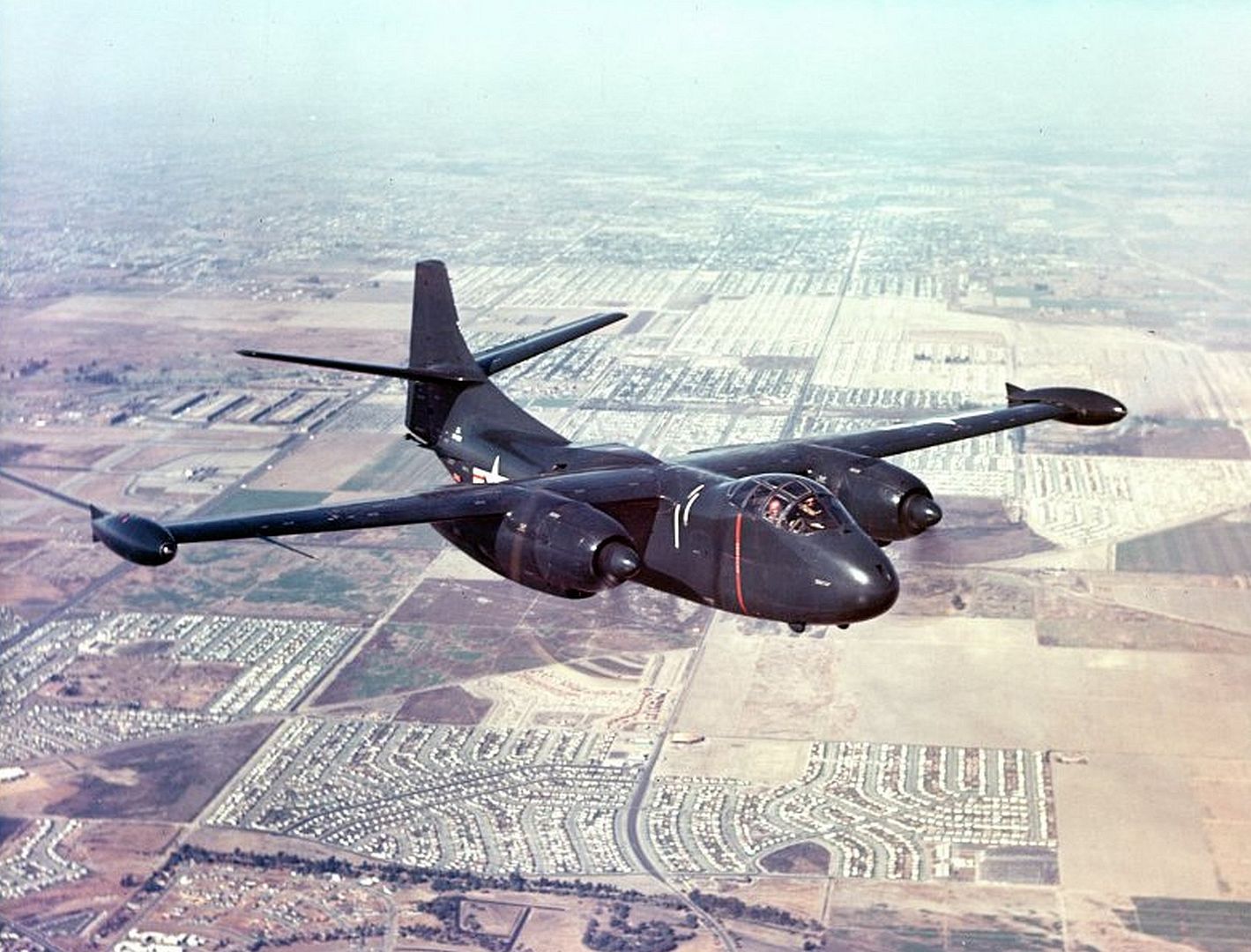

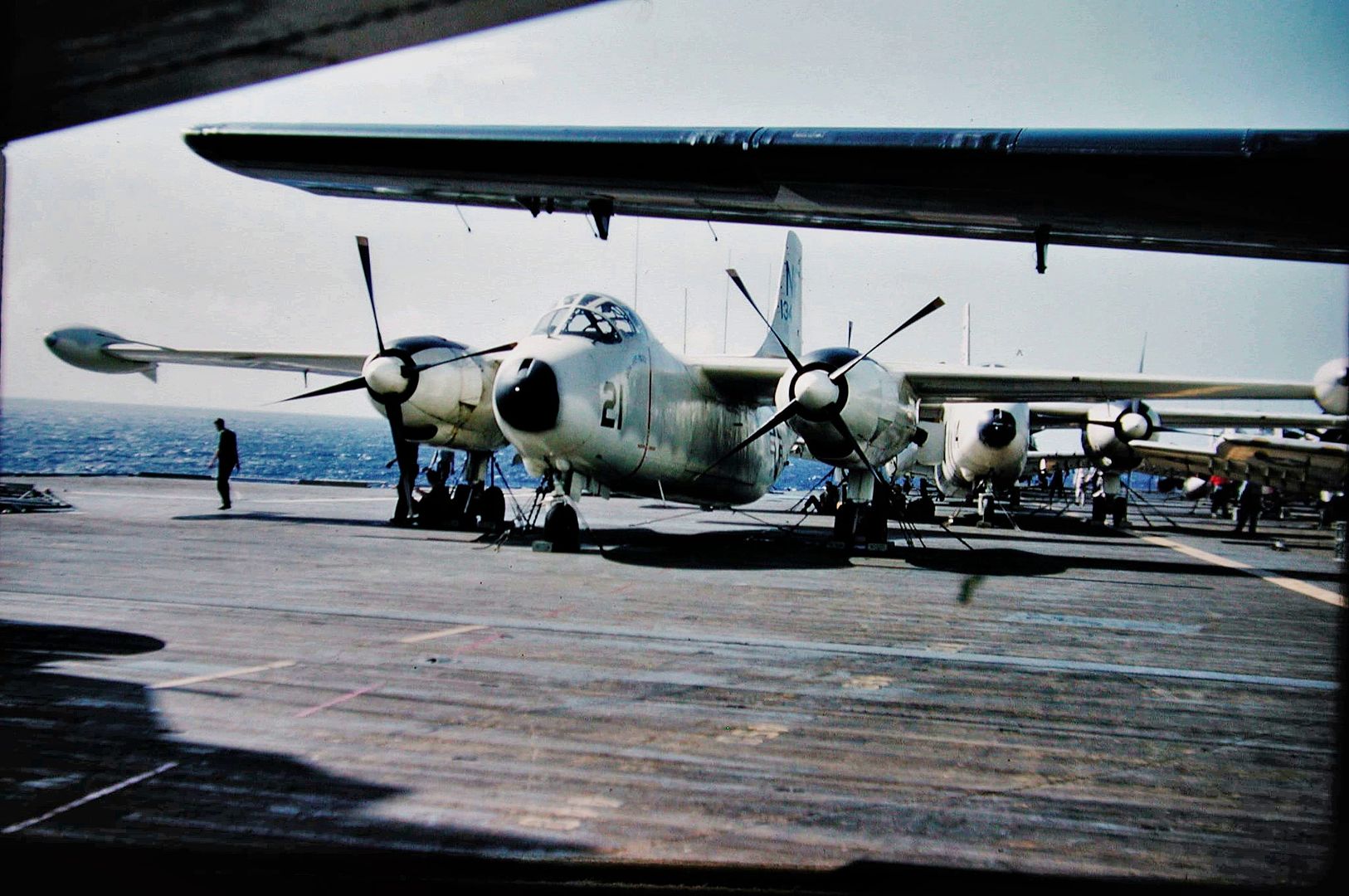
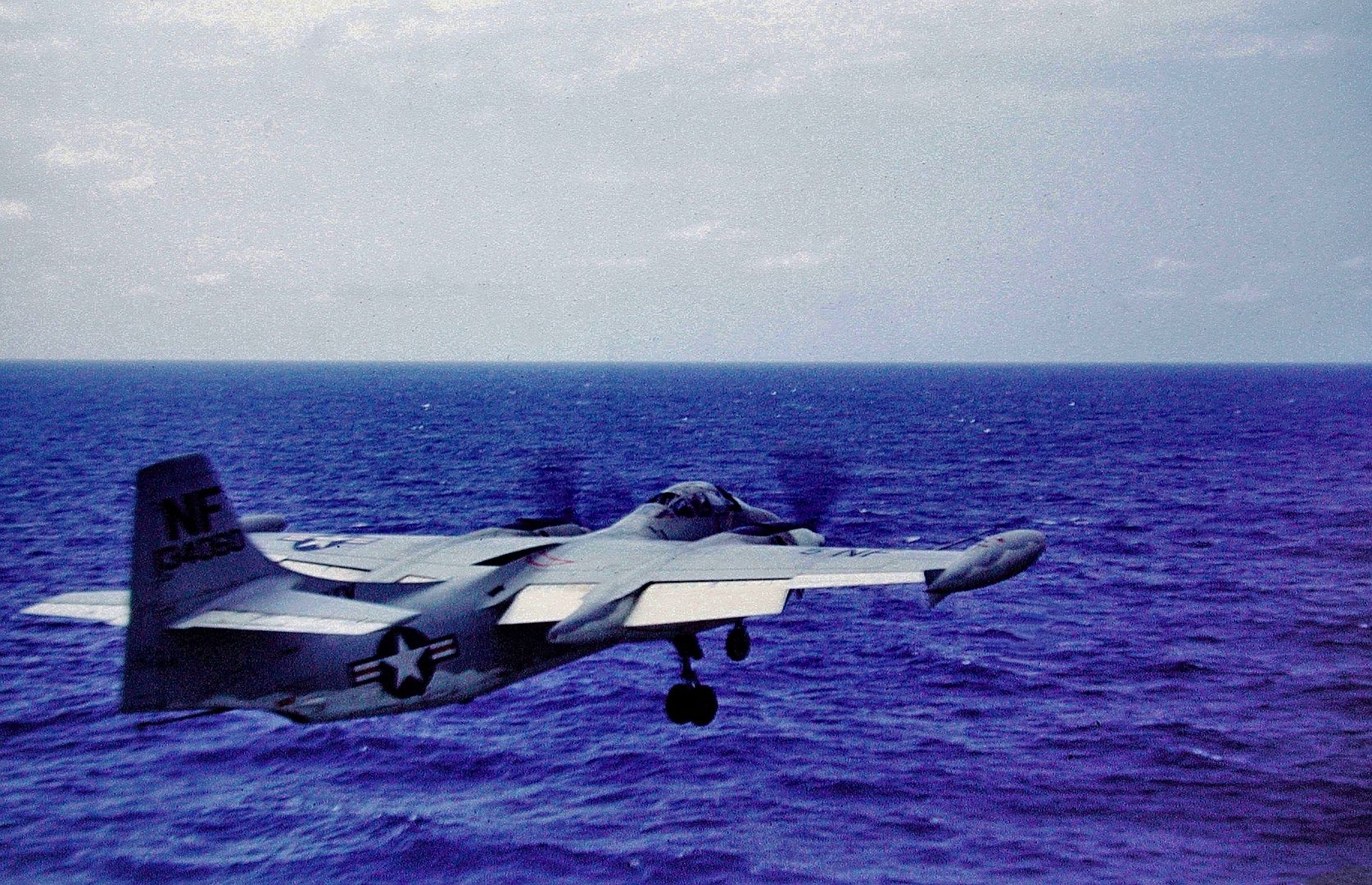

Specifications (AJ-1)
General characteristics
Crew: 3
Length: 63 ft 0.72 in (19.2207 m)
Wingspan: 71 ft 4.56 in (21.7566 m) without tip tanks
75 ft (23 m) with tip tanks
Width: 50 ft 6 in (15.39 m) wings folded
Height: 20 ft 6.24 in (6.2545 m)
16 ft (4.9 m) fin folded
Wing area: 835.45 sq ft (77.616 m2)
Airfoil: NACA 64-212
Empty weight: 27,558 lb (12,500 kg)
Gross weight: 47,000 lb (21,319 kg)
Max takeoff weight: 50,954 lb (23,112 kg)
Powerplant: 2 × Pratt & Whitney R-2800-44W Double Wasp 18-cylinder air-cooled radial piston engines, 2,400 hp (1,800 kW) each
Powerplant: 1 × Allison J33-A-10 turbojet engine, 4,600 lbf (20 kN) thrust
Propellers: 4-bladed Hamilton Standard, 14 ft 6 in (4.42 m) diameter constant-speed propellers
Performance
Maximum speed: 471 mph (758 km/h, 409 kn)
Range: 1,731 mi (2,786 km, 1,504 nmi)
Service ceiling: 40,800 ft (12,400 m)
Rate of climb: 2,900 ft/min (15 m/s)
Wing loading: 63.2 lb/sq ft (309 kg/m2)
Power/mass: 0.091 hp/lb (0.150 kW/kg) (R-2800s only)
Thrust/weight: 0.087 (J33 only)
Armament
Bombs: 12,000 lb (5,400 kg) of conventional bombs or 1 × Mark 4 nuclear bomb
North American XA2J Super Savage
Design and development
The XA2J was intended to be a turboprop-powered derivative of the AJ Savage, with the design as initially proposed in December 1947 a simple modification of the Savage, with extensive use of components of the earlier aircraft. The design gradually evolved, however, to improve performance and increase compatibility with operations from aircraft carriers,as it was recognized that the AJ Savage was deficient in performance and was a less-than-satisfactory carrier aircraft.
The A2J was essentially an enlarged AJ Savage with the two reciprocating engines replaced with two Allison T40 turboprop engines and removal of the tail-mounted turbojet. Like the AJ, it was a high-winged monoplane with unswept wings. The wings were fitted with leading edge slats and large trailing edge flaps, and folded outside of the engine nacelles to ease storage aboard ship. It had a crew of three: pilot, co-pilot/bombardier, and gunner who sat in a pressurised cabin in the nose of the aircraft. Up to 10,500 lb (4,800 kg) of bombs could be carried in a large enclosed bomb-bay in the center fuselage, while the planned defensive armament was a remotely controlled tail turret with two 20 mm cannon.
Construction of two prototypes started 1 October 1948, but due to delays developing the engines, the first flight was not until 4 January 1952. The competing Douglas XA3D, the prototypes of which were ordered the year after construction had begun on the XA2J prototypes, first flew in October 1952. The A3D had far superior performance, which doomed the XA2J.
The root cause for the failure of the XA2J was the protracted development and poor reliability of the Allison T40 engines. The T40 engine was an ambitious engine design with two power sections, (the T38 was developed from the T40 to assist in its development, by using a single power section with extension shaft and gearbox), driving two large contra-rotating propellers through a combining gearbox. Both the engines and the gearbox proved to be unreliable. The T40 engine was also used in the developmental Douglas A2D Skyshark, and the Republic XF-84H Thunderscreech. After a number of engine-related mishaps, the XA2J project was abandoned and the second prototype was never flown.

Specifications (XA2J-1)
General characteristics
Crew: 3
Length: 70 ft 3 in (21.42 m)
Wingspan: 71 ft 6 in (21.80 m)
Height: 24 ft 2 in (7.37 m)
Wing area: 836 sq ft (77.7 m2)
Empty weight: 35,350 lb (16,035 kg)
Gross weight: 46,890 lb (21,269 kg)
Max takeoff weight: 61,200 lb (27,760 kg)
Powerplant: 2 × Allison T40-A-6 turboprops, 5,035 hp (3,755 kW) each
Performance
Maximum speed: 451 mph (726 km/h, 392 kn)
Range: 2,180 mi (3,508 km, 1,890 nmi)
Service ceiling: 37,500 ft (11,400 m)
Rate of climb: 6,820 ft/min (34.7 m/s)
Wing loading: 56 lb/sq ft (274 kg/m2)
Power/mass: 0.21 hp/lb (350 W/kg)
Armament
10,500 lb (4,763 kg) of disposable stores
2 x 20 mm cannons in tail (never fitted)
Post a reply
- Go to Previous topic
- Go to Next topic
- Go to Welcome
- Go to Introduce Yourself
- Go to General Discussion
- Go to Screenshots, Images and Videos
- Go to Off topic
- Go to Works in Progress
- Go to Skinning Tips / Tutorials
- Go to Skin Requests
- Go to IJAAF Library
- Go to Luftwaffe Library
- Go to RAF Library
- Go to USAAF / USN Library
- Go to Misc Library
- Go to The Ops Room
- Go to Made in Germany
- Go to Campaigns and Missions
- Go to Works in Progress
- Go to Juri's Air-Raid Shelter
- Go to Campaigns and Missions
- Go to Works in Progress
- Go to Skinpacks
- Go to External Projects Discussion
- Go to Books & Resources
